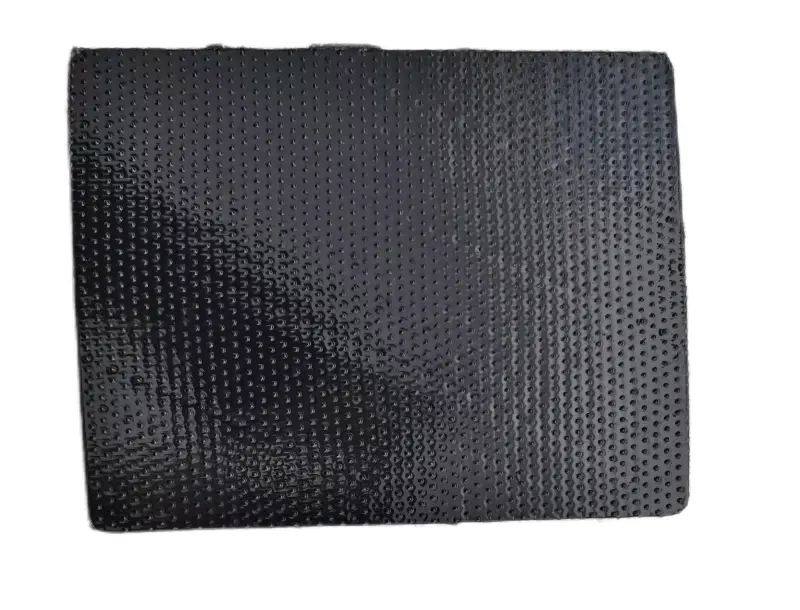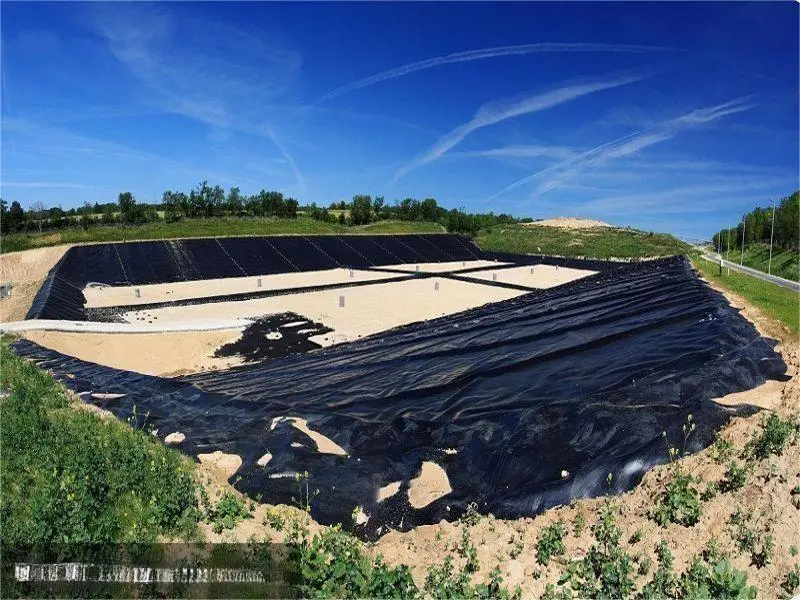![]() 1.5 Double-sided smooth HDPE geomembrane.pdf
1.5 Double-sided smooth HDPE geomembrane.pdf
![]() 1.5mm single-textured HDPE geomembrane.pdf
1.5mm single-textured HDPE geomembrane.pdf
Geomembranes are widely used in various civil engineering and environmental applications for their impermeable properties. Among the different types of geomembranes, textured and smooth geomembranes stand out due to their unique characteristics. This paper aims to provide a comprehensive analysis of the advantages and disadvantages of textured geomembranes compared to smooth geomembranes, covering aspects such as raw materials, manufacturing processes, applications, and physical properties.
Introduction: Geomembranes play a crucial role in environmental protection, waste containment, and water management. They are manufactured from various materials such as polyethylene, polyvinyl chloride (PVC), and ethylene propylene diene monomer (EPDM). Textured and smooth geomembranes are two primary types, each offering distinct features and applications.
Raw Materials: Smooth geomembranes are typically made from materials like high-density polyethylene (HDPE), which provides uniformity and smooth surface characteristics. On the other hand, textured geomembranes are often produced from the same materials but undergo additional processing to introduce surface texturing. This texturing can be achieved through methods like calendaring, embossing, or extrusion, resulting in a roughened surface.
764696.webp)
Advantages of textured geomembranes:
Enhanced frictional characteristics: The textured surface provides increased frictional resistance, making textured geomembranes suitable for applications where slope stability and soil/geomembrane interface friction are critical.
Improved interface shear strength: Textured geomembranes exhibit better interlocking with soil particles, resulting in higher interface shear strength compared to smooth geomembranes.
Reduced slippage potential: The rough surface texture minimizes the risk of slippage between geomembrane layers or between the geomembrane and underlying soil, enhancing stability in containment systems.
Effective drainage and gas venting: The surface texture facilitates drainage and allows for the venting of gases, particularly beneficial in landfill applications to prevent the buildup of leachate and methane gas.

Disadvantages of textured geomembranes:
Potential for puncture damage: The textured surface may be more susceptible to punctures compared to smooth geomembranes, especially during installation or handling, necessitating careful handling procedures.
Higher material and installation costs: The manufacturing process for textured geomembranes involves additional steps compared to smooth geomembranes, leading to higher material costs. Additionally, installation of textured geomembranes may require specialized techniques, increasing overall installation costs.

Manufacturing Processes: Smooth geomembranes are typically manufactured through processes such as extrusion or calendering, resulting in a smooth, uniform surface. Textured geomembranes undergo similar manufacturing processes but include additional steps to introduce surface texture. Calendering, embossing, or specialized extrusion techniques are employed to impart the desired texture, offering flexibility in texture design and application-specific requirements.
Advantages of smooth geomembranes:
Consistency in thickness and appearance: Smooth geomembranes exhibit uniform thickness and surface appearance, ensuring consistent performance across the installation area.
Ease of welding: The smooth surface of geomembranes facilitates welding operations, allowing for efficient seam connections and ensuring leak-proof containment systems.
Versatility in applications: Smooth geomembranes are suitable for a wide range of applications, including lining for ponds, canals, and reservoirs, as well as in geomembrane-based barriers for environmental protection.
Disadvantages of smooth geomembranes:
Limited frictional resistance: Smooth geomembranes may exhibit lower frictional resistance compared to textured geomembranes, potentially compromising stability in high-gradient slopes or areas with significant soil movement.
Reduced interface shear strength: The absence of surface texture may result in lower interface shear strength between the geomembrane and underlying soil or other materials, requiring additional reinforcement measures in certain applications.
Applications: Textured and smooth geomembranes find applications in various civil engineering, environmental, and industrial sectors.

Applications of textured geomembranes:
Landfill liners and caps: Textured geomembranes provide effective containment and gas venting in landfill applications, reducing the risk of environmental contamination and methane buildup.
Mining and pond liners: The enhanced frictional characteristics and interface shear strength of textured geomembranes make them suitable for lining mining ponds and tailings containment facilities, ensuring structural stability and preventing leakage.
Hydraulic structures: Textured geomembranes are used in hydraulic structures such as dams, canals, and reservoirs to enhance slope stability and reduce erosion risks.
Applications of smooth geomembranes:
Water containment: Smooth geomembranes are commonly used in water containment applications such as reservoirs, ponds, and irrigation canals, providing impermeable barriers to prevent seepage and water loss.
Aquaculture ponds: Smooth geomembranes are utilized in aquaculture ponds for fish farming, creating a watertight barrier to maintain water levels and quality.
Environmental remediation: Smooth geomembranes are employed in environmental remediation projects for containing and isolating contaminated soil or waste materials, preventing leachate migration into surrounding areas.
Physical Properties: The physical properties of geomembranes, including tensile strength, elongation at break, and puncture resistance, play a crucial role in determining their suitability for specific applications.

Comparative analysis of physical properties:
Tensile strength: Both textured and smooth geomembranes exhibit high tensile strength, with values typically exceeding industry standards. However, textured geomembranes may demonstrate slightly higher tensile strength due to increased interface shear resistance.
Elongation at break: Smooth geomembranes tend to have higher elongation at break compared to textured geomembranes, allowing for greater flexibility and deformation without compromising integrity.
Puncture resistance: Smooth geomembranes generally offer superior puncture resistance compared to textured geomembranes, owing to their smooth surface and uniform thickness.
In conclusion, textured and smooth geomembranes each offer distinct advantages and disadvantages based on their raw materials, manufacturing processes, applications, and physical properties. Textured geomembranes excel in applications requiring enhanced frictional resistance, interface shear strength, and drainage capabilities, such as landfill liners, mining ponds, and hydraulic structures. On the other hand, smooth geomembranes are preferred for applications where consistency, ease of welding, and versatility are paramount, including water containment, aquaculture ponds, and environmental remediation. Ultimately, the selection between textured and smooth geomembranes should be based on project-specific requirements, considering factors such as slope stability, soil conditions, installation complexity, and budget constraints.
683.webp)
996.webp)
713.webp)

503.webp)
759.webp)
897.webp)
942.webp)
237.webp)